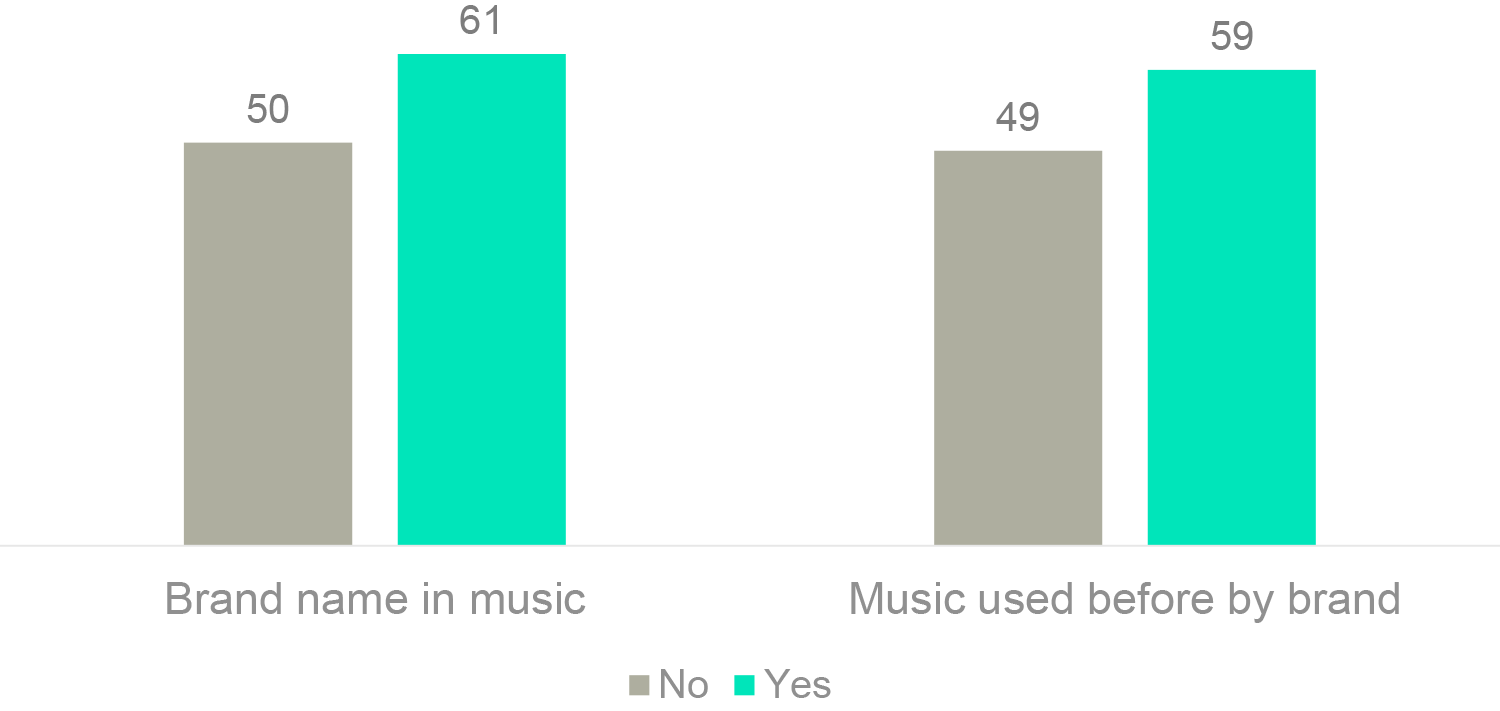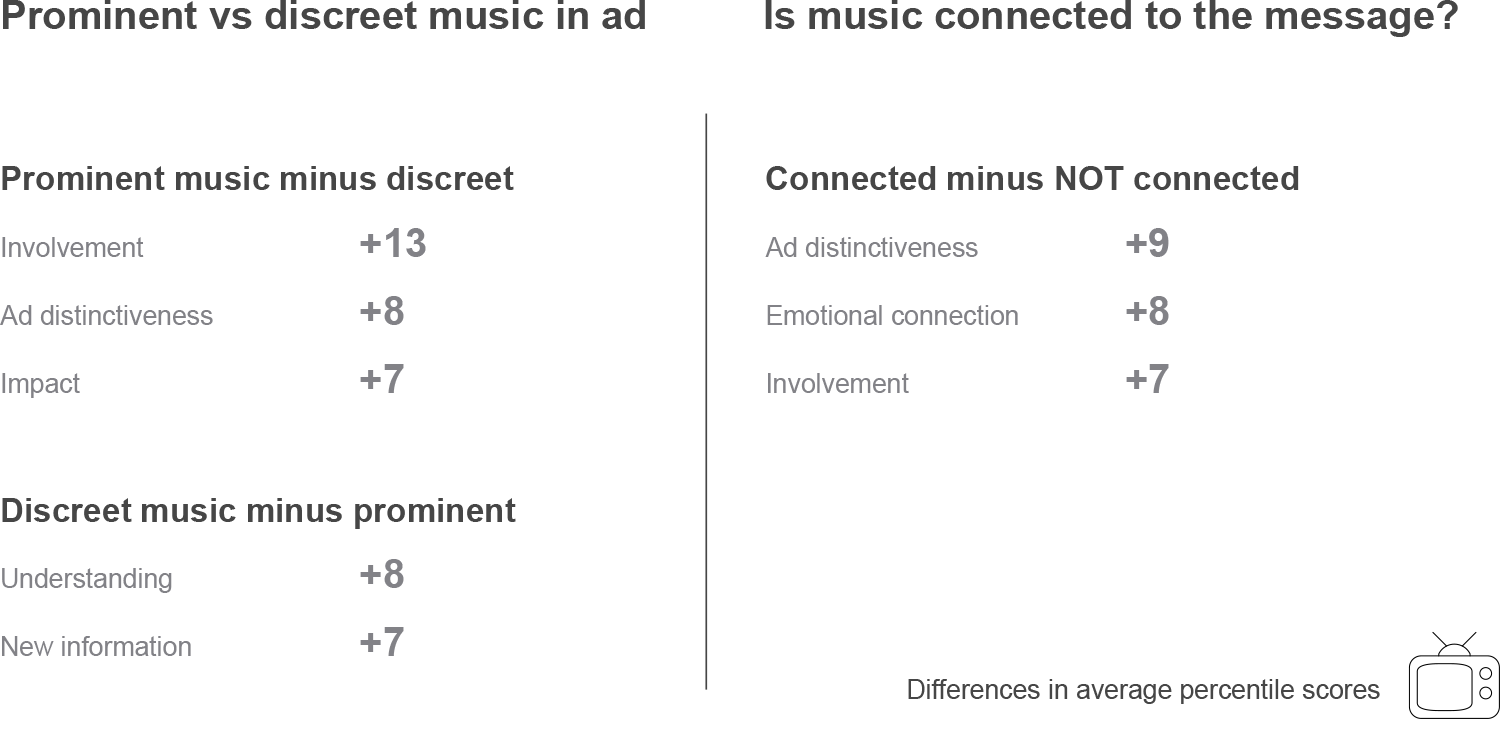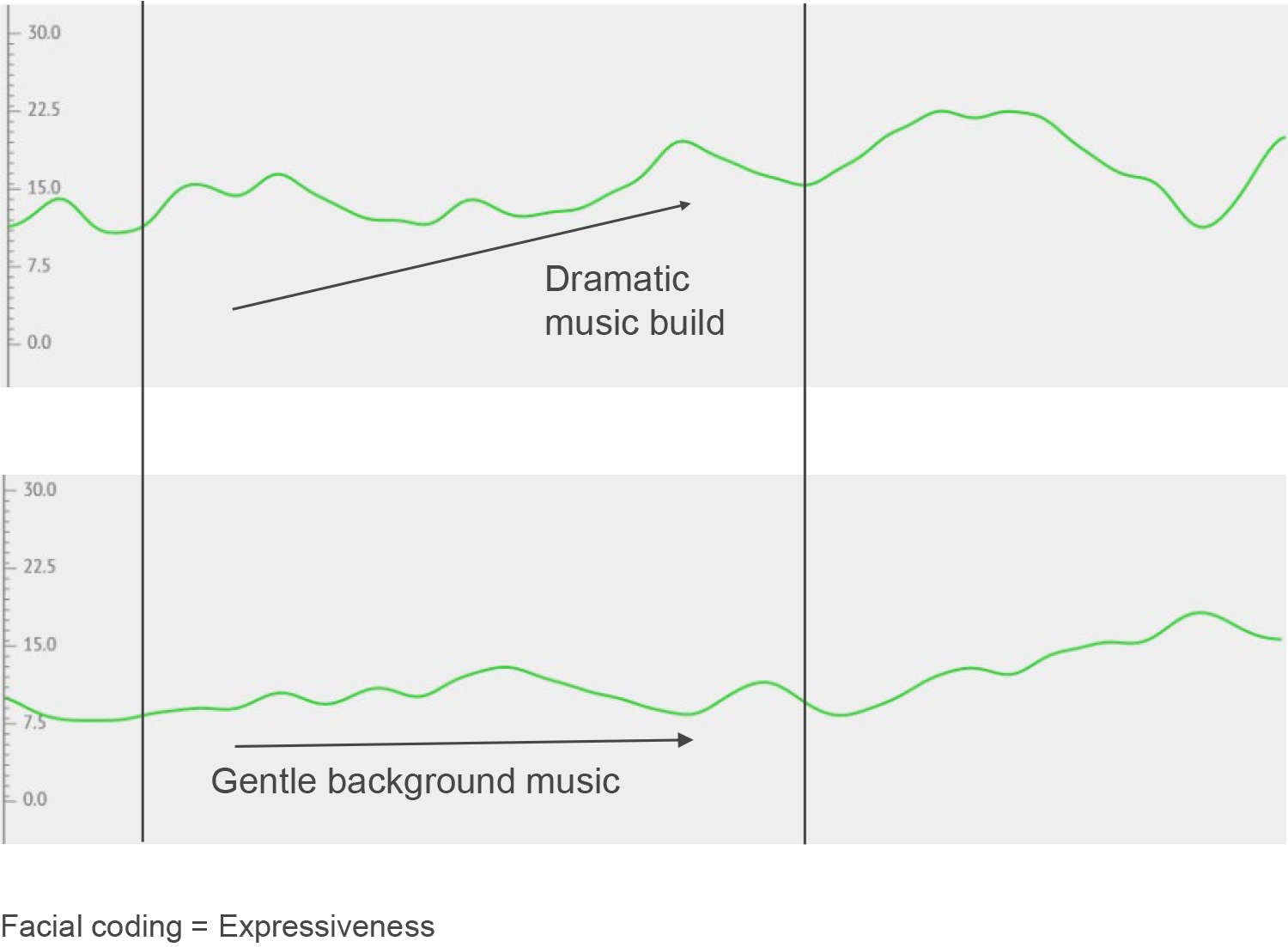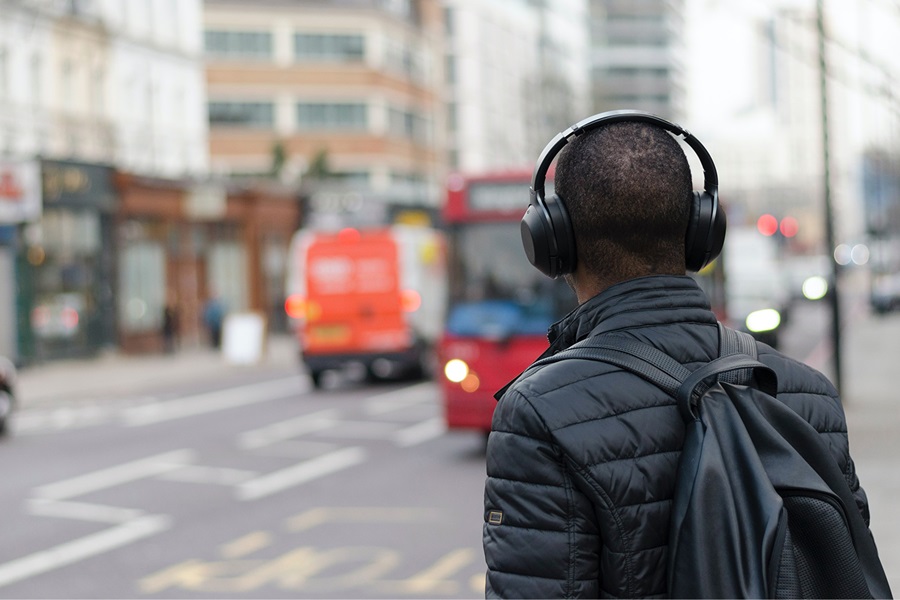In a world of fast-moving visual media stimulation, it’s difficult to walk down a street without passing the stooped figures of people gazing down into their phones. But have you noticed the ever-increasing number now wearing headphones? More people than ever are listening in, creating more opportunities to get your brand heard at scale.
The growing popularity of podcasts, social audio, voice messaging and new technology means that ‘sound off’ is being replaced by sound very much ‘on’.
At Kantar, 84% of the ads we test globally have music. We’ve always known that it’s great to include music, but probably the most important reason to do so is that the lack of it makes it much harder to connect with your audience on an emotional level. Can you imagine a Christmas ad without any music?
Are your consumers listening?
Sometimes, is the answer to this question. If music is an essential part of your advertising, think carefully about where you’re placing your ad. Sound is less likely to be on in some platforms. Although subtitles are commonplace, you should avoid these environments if the ad doesn’t work without the music. Our Link ad testing database shows that 50% of Facebook ads contain music, but we know from our behavioral metrics that around 85% of viewing on Facebook is done with the sound off, making the expense of music rights unjustified.
However, if music is essential in your Facebook ads, the creative needs to build in very good reasons to persuade the viewer to enable the sound. If your TV ad uses music, and the online campaign builds on this, it’s possible consumers will be encouraged to enable the sound if they enjoyed it and recall it when they see the online ad.
Music plays a different role across other digital platforms. The nature of YouTube, where our database shows that 80% of ads include music, means ads are generally listened to with the sound on. And TikTok is a platform where creative collaboration at scale is embedded in its very nature. Sound is the element that brings these relationships together, making TikTok a sound on platform, with music at its heart.
Do they like what they hear?
Music can touch our emotions in a very different way to visual stimulus alone. We see a strong relationship between consumers who enjoy the music in an ad, and those who feel an emotional connection through our ‘feel-good’ metric. Our Link database shows a 63 point increase in the average feel-good factor between those who enjoyed the music most and those who didn’t enjoy it.
Further, when people enjoy the music in the ad, we see a 20 point increase in the average involvement score when the music is also well-known.
Music can also significantly enhance appeal to your target audience, so it is important to make sure they know it, and that it is emotionally congruent and culturally relevant. Music is one of the main creative enhancers of receptivity to ads across all generations, but especially so amongst Gen Z who are also more receptive to advertising on music platforms themselves.
Will your music work for your brand?
“The selection of music for advertising campaigns is and should remain driven by the creative idea.” (Sir John Hegarty, founder Bartle Bogle Hegarty)
Music has the power to add dramatic effect and set a tone. Our database also shows that it can contribute towards getting your brand noticed, building your brand’s image and acting as a future brand cue when used frequently and creatively enough to become firmly associated with your brand.
Repeated use of the same music and incorporation of the brand name helps with brand association

Source: Kantar Link database
It is important to ensure the music has not been used widely before, to avoid the risk of brand misattribution. It needs to fit with your brand image and set the right tone – if the music is associated with a particular band or musician, do they also fit your brand’s image?
Think about affordability early in the process. On average, music is around 4% of the production budget of an ad, and cost can be a big barrier. However, it is worth highlighting that there are ways in which the use of music in your ads can work to save you money. Re-using the same creative but setting it to new music, can save on production costs and give a longer life span to an already successful ad. A great example of this is the Mercedes ‘Snow Date’ ad, where the same engaging creative was shown using two different soundtracks: Don't ever lose your innocence and Make you feel my love.
Music can also extend the life of your ad if people continue to recognize and associate it with your brand, acting as a celebrity in its own right (at a fraction of the cost). Once a successful association has been made, other possibilities may evolve such as partnerships with the artists. Billy Eilish and Dodge formed a two-way partnership where Eilish launched her own new music tracks to an eagerly awaiting audience within Dodge’s advertising.
Should you opt for more pricey well-known music? Perhaps. Some benefits could outweigh the additional cost. The relationship between enjoying the music and involvement in the ad is stronger amongst ads with well-known music, and our data shows that using well-known music helps get your ad noticed (11-point increase on average ‘ad distinctiveness’) and creates stronger emotional connections (10-point increase on average feel-good metric).
Other key factors to check when selecting music include the use and style of music with the type of messaging you want to convey. Prominent music in TV ads can aid involvement, whereas discreet music can be better at conveying news. When the music in your ad – whether prominent or discreet – is also connected to your ad’s message, it helps get your ad noticed and engage your audience.

Source: Kantar Link database
Around a quarter of ads with music use music created or adapted for the brand. Done well this can lead to long-lasting brand associations: think Shake n Vac in the UK and Louie the fly in Australia, still recalled many decades later. The key, however, is to do it well. We see little difference overall in creative effectiveness measures amongst ads that have created their own music versus those that haven’t.
Does your music fit your creative?
Making sure the music works with the structure and tone of your ad is also crucial. It must engage at the right moments – preferably the moments that highlight your brand. The way the music is incorporated can have a powerful effect on the overall emotional experience of the whole ad.
The example below shows the same ad tested twice with amendments to the music. Both begin without music and end with light-hearted upbeat music. The different music styles in the middle show the effect music can have on the emotional experience of the ad.
The way music is used can impact the emotional experience of the ad

Source: Kantar Link database
What does the future hold?
Sonic branding, aka jingles or audio logos, has taken a new turn with advances in technology. But they are most effective when they work alongside other assets to build meaningful and identifiable brand associations. A strong, unique sound that appears in your advertising should be played across all touchpoints, from podcasts (note their ranking in Media Reactions 2021) to social audio. Beyond this, sonic branding can be translated into functional assets such as the Amazon truck backing up alert, a custom tune when you turn your car on, or a unique sound that plays when you buy something in a shop. The possibilities to ‘get your brand heard’ are currently on the crest of a wave that it could prove beneficial to stay ahead of.
New technology is creating a more audio-centric world, so brands can now develop deeper relationships with their consumers through sound. The over-stimulation of visual media, as we switch from one screen to another, means reaching out to your consumers through the additional sense of sound may now be an important move to make. Make sure your audience can hear you.
Music is so powerful in telling a story and can help you break creative boundaries. But it is subjective. Testing you have chosen your music wisely is easy and cost-effective. You can get a quick read on your ads in as few as 15 minutes with Link’s AI solutions or get a more comprehensive evaluation in as few as 24 hours via Kantar Marketplace. Get in touch to find out more.


